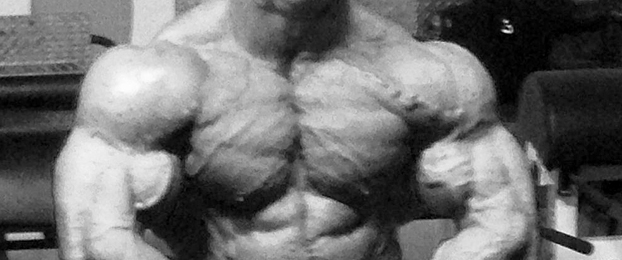

The serratus (anterior and posterior) is one of the most overlooked and undertrained areas of an athlete’s body, especially in powerlifters. These muscles aid in the lockout of the bench press and stabilize the shoulder blade and shoulder girdle. By neglecting this area, you can suffer during the last half to one inch of your bench lockout.
A weak serratus can cause your shoulder blade to move out of position while benching and can lead to nerve impingement and damage that results in unresponsiveness in one side or the other during the bench press. This may lead one to believe that it’s a strength issue when actually the nerve impulses are impeded on their way to the muscles. The fix is pretty simple and, in the worst cases, may only require chiropractic treatment.
Many people have a weak serratus. Recently, I’ve been told about this problem four or five times, even by a local active release therapy (ART) therapist. So I decided to speak with members of the UNC Wilmington Physical Therapy Department as well as members of the Sports Therapy Program, including my son, Christopher W. Clark. They recommended some easy exercises to throw in at the end of your workouts 2–4 times per week.
Everyone should do the following movements if for no other reason than prehabilitation.
- Perform bench press lockouts over the neck/face with the elbows out. Work the anterior (which is usually not the problem).
- Do small, weighted ball drops (2–5 lbs) while lying face down on a flat bench. Catch the ball on the way down. Then, throw it back up (with the palms down) and catch it at the top.
- Try some Halbert swings. Lie face down on an adjustable bench set at approximately 25–30 degrees. Take a dumbbell in each hand and, with the palms facing each other, let the dumbbells swing toward your waist. Then, propel them upward toward the head and flare the elbows and bell outward with a brief resistance at the top (best described as a face pull type position).
- Stand facing a wall with the elbows out and raised and the hands up. Bounce a medicine ball off of a wall and catch it in the plane of the muscles’ natural movement.
- While lying face down on a bench (in the same basic position as in number four), bounce a tennis ball off the floor and catch it repeatedly.
All of these movements are very simple so try them. They will wear you out at first, and it will be evident that you should have been doing them all along. These muscles respond quickly though so the muscular imbalance will be fixed in no time.
If the problem persists, you may need to get chiropractic and/or ART therapy to get the muscular firing pattern back on track. Of course, there are occurrences that require surgery, but the trick is to catch it way before that.








